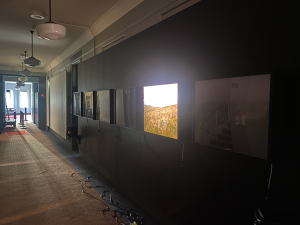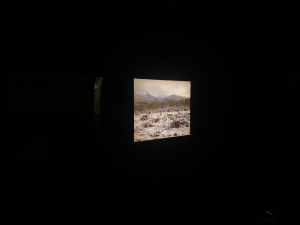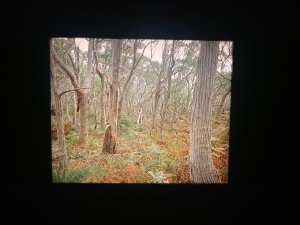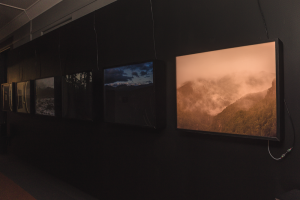






The Poetry of Placemaking examines the history and place of landscape photography in Australia and its impact on settler colonisation. The work examines the use of photography in 19th-century Australia by settler photographers, focusing on the ways in which these images resonated at the time and have continued to resonate throughout history. Central to the piece is the idea of placemaking, that the desire to belong and call somewhere home is an innate human desire but within the context of settler colonialism in Australia this practice led to colonisation, dispossession and genocide.
The form of the work draws on the magic lantern shows of the 19th century, where image, sound and word combined to craft a specific idea of landscape. The work aims to show that with context, landscape images can be and have been moulded for a specific purpose, which throughout history has been drawn upon to characterise ideas of the Australian nation and in doing so, demonstrates the use of photography as a tool of colonisation.
I would like to acknowledge the Aboriginal people of Iutruwita (Tasmania) upon whose land this work was created and pay my respect to elders past and present. I would also like to acknowledge the Gadigal people, upon whose land the work is exhibited and pay my respects to elders past and present. The sovereignty of these lands has never been ceded by its Indigenous peoples and their connections to these lands continues interminably.
⁂
Robert Smith is a conceptual artist whose practice spans photography, sculpture and sound, primarily investigating how photographs communicate and the broader impacts of this visual language. Smith engages with the past, relating art history and social histories more broadly to investigate how previous events resonate with and impact the present human experience.